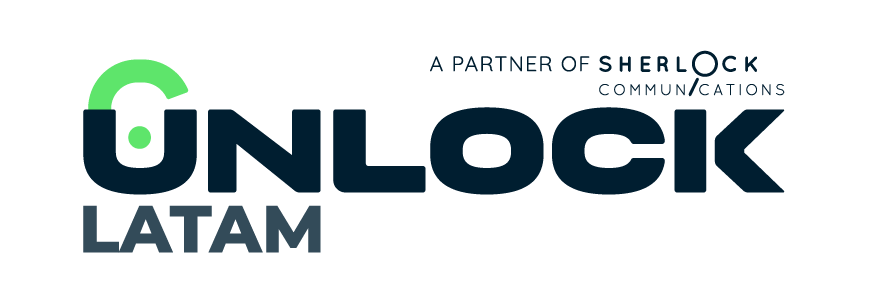What is stroytelling and how to use it effectively
Telling stories is an art that requires creativity, vision and some narrative talent. But it is also a skill that is learned and trained. You don’t have to be a writer to create content with soul that resonates with your audience or simply resolves the doubts or needs of those who come into contact with your messages. Storytelling is a great bridge, which creates ties and deepens bonds. That is why it is a key instrument within the framework of lead generation and sales prospecting strategies.
In times when content production multiplies to exponential levels, inhabiting the most diverse platforms, differentiating ourselves in the messages we share becomes essential. There is a lot on offer and those looking for products and services have a lot to absorb and select from an endless number of stimuli that fight for their attention.
Like never before, digital marketers have to differentiate their content to deliver an incredible experience, leading to the conversion you’re after. How is it achieved? What characteristics should a good story have today? What strategies capture attention and make consumers fall in love? What is the perfect storytelling for each stage of the sales process and for each customer profile?
It is an exciting topic, about which there is much to learn to implement an effective strategy. Lets start by the beginning.
What is storytelling: a powerful communication tool
Storytelling is the art of telling stories and a good story sells. It’s that easy. That is why narrative skills are one of the best marketing tools to connect with your audience and strengthen the bond with users, consumers and potential clients.
That’s why we say that storytelling is the heart of inbound marketing, because an authentic, compelling, well-told story is a key resource to boost the visibility of a brand and the growth of a business. Basically because it establishes an emotional connection and generates engagement.
Digital storytelling and the immersive boom
Although today we take multiplatform for granted, one of the most powerful spaces to meet potential clients today is the digital universe. It is a field with many possibilities, where more elaborate plots can be incorporated, integrating an immersive narrative and audiovisual resources.
The possibilities of providing an unforgettable story are multiplied with digital storytelling, adding more and better resources to lead generation strategies.
Keys to good storytelling: how to use it effectively
Because storytelling can take so many forms, creating a good story can be challenging. Some advices:
- What makes a good story? Storytelling uses words to create new worlds and experiences for the recipient of the message. It can target the emotional, the rational, both. It can inspire, it can drive actions, it can call for reflection. The key is to be original in both content and form, two things that we must define only after knowing who we are talking to.
- There can be no message until we are clear about our target audience. Therefore, the first step is to research, ask and get to know the recipient of your story: gathering information is the key to creating a personalized experience. An effective story, that resonates, is a story that challenges, that lets go of the general and the abstract to go to meet the other.
- It is essential to pay attention to the language we use. Using words and phrases that help your readers understand that the content is designed especially for them is key to generating engagement.
- It is also essential to have images: the brain processes them 60 times faster than words. It is important to plan a visual delivery from the beginning.
- The commercial impact can be very great, especially due to the rise of social networks. Businesses and clients exchange information daily, but standing out from the crowd is the most difficult. Then comes the challenge of captivating to achieve economic benefits in the short or long term.
- With B2B storytelling, what you achieve is eliminate that communication barrier between your company and the business you want to connect with. In this way, you get them to listen to what you have to say, because you say it in an attractive way. To do this, you need to carefully seek interaction and feedback. If you manage to involve your clients in your processes, you will stay in their minds and you will be able to build loyalty in the relationship.
- A digital story and a remote contact is completed and deepened with an encounter. If you can’t be on site with prospects, video conferencing can be a powerful tool – the face-to-face experience drives better storytelling performance.
- Evaluating and measuring all efforts in terms of storytelling is essential. There are many ways to monitor the performance of your stories, allowing you to refine and discard what isn’t working to optimize the creation of powerful connections with potential customers.
To finish this introduction to storytelling, it is important to keep in mind that this resource, like many others that make up the digital toolbox, is constantly evolving. It changes, adapts, integrates new elements and takes on new challenges. Especially when we target mass audiences and we have to combine personalization with scalability, or when we work in the B2B business, we have to find a way to speak to each customer and to everyone at the same time.
Remember that, in the case of B2B, storytelling serves to connect with other businesses by promoting your values. This way you can attract other businesses that have the same vision and a similar value system. In this way, sales prospecting is strengthened because the relationship becomes increasingly closer.
Mastering Outbound Sales: Strategies for Predictable Revenue Growth
Mastering Outbound Sales: Strategies for Predictable Revenue Growth Nobody said it better than Aaron Ross, author of Predictable Revenue: “You want growth that doesn’t require guessing, hope, and frantic last-minute...
The Role of Sales Development Representatives (SDRs) in Predictable Revenue
The Role of Sales Development Representatives (SDRs) in Predictable Revenue Sales Development Representatives (SDRs) play a crucial role in the implementation of the "Predictable Revenue" framework, initially conceptualized by Aaron...
B2B prospecting: finding high-quality leads
B2B prospecting: finding high-quality leads Although there are very common concepts among those of us who work in different areas of marketing, more than once we take for granted that...



